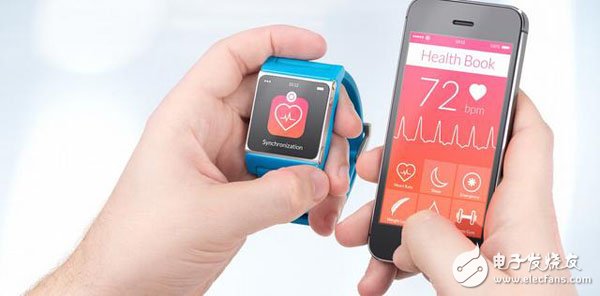Today, the world is paying close attention to Apple Watch's Watch OS2 operating system, the latest technology is designed to take Apple's wearable devices to new heights. Subsequently, HTC also released the company's first Android Wear smart watch Halfbeak. With the emergence of new and upgraded devices, major technology companies are hoping to attract consumer attention – they are already obsessed with wearable devices. IDC's research found that in the second quarter of 2015, the global wearable market grew by 223.2%. For major brands, it's a great time to capture existing and future wearable device users and attract them to pay for their own products.

Today's consumers have more wearable device options than ever before. So, how can major brands stand out and meet consumer demand? The key is to listen to the voices of consumers and take the time to understand their preferences. For example, how much are they willing to pay for this product? What is the reason for causing or hindering their purchase? In order to conduct in-depth research, SDL searched a database of 50 billion conversations on 500,000 social media sites to determine consumer perceptions of devices such as Samsung Gear S, Microsoft Band and Apple Watch. In the end, the study summed up the five factors that drive consumers to buy and buy wearables.
1, practical applications
Apps are a top concern for consumers interested in wearable apps, and about 27% of social media related to them are around application issues. There is no doubt that the app has been fully integrated into our daily lives – whether it's going to the airport, checking in, getting the latest scores from a big game, or even helping two people in different languages ​​to start a real-time conversation. Application to complete.
Apple is aware of this huge demand and has already offered more than 10,000 watch applications through the AppStore. If you want to stand out from the competition, you must provide a wealth of applications to ensure that wearable devices can facilitate our daily lives, not just flashy technology accessories.
2, waiting for 2.0 products
In the field of technology, people always like the smallest, fastest, the latest style, the best effect of electronic products - wearable devices are no exception. While wearable devices have had a major impact on the IoT market, the average consumer is still struggling to find its practical value.
As more and more manufacturers enter this field, consumers will also get more choices. This is a good thing, but it is also daunting because people are researching which product has the highest price/performance ratio. This often means that consumers are waiting for the release of the second generation of products, about 27% of consumers mentioned that they are waiting for the next generation of wearable devices to be available.
3. Is it beautiful?
Wearables are a highly visible product that blurs the line between fashion and technology. We see that Google Glass is difficult to fully integrate into the daily lives of ordinary consumers. Whether worn on the wrist, on the head or elsewhere, consumers want wearables to blend in with their style, with 22% of social conversations around design.
Richard Branson wearing Garmin Vivofit and tennis star Serena Williams (Serena Williams) wearing Nike FeulBand photos show that the design is still the major wearable device brand to turn consumers into fashion A major obstacle for the influx of people. Working with big-name designers can help break this bottleneck. The collaboration between AppleWatch and Hermès and the cooperation between Fitbit and Tory Burch are typical examples.
4, the price is right
Although the latest version of wearables is often expensive, price is not the primary consideration for early adopters. In their view, the brands they like are often the first factor, and prices are usually not considered. After all, AppleWatch's 9-week sales have surpassed the initial sales of the iPhone and iPad. Major brands must ensure that consumers can perceive the value of their products and meet their daily usage expectations.
5, all-day life
Battery performance does not seem to meet the development needs of the wearable industry. According to EndeavourPartners, one-third of US wearable device users stopped using the product six months after purchase.
One of the reasons they do this is that the battery life is too short. People have reason to expect stronger battery life - they want to be online 24 hours a day, and don't want to have a smart watch with no power on their hands. The key to success in this area is to ensure endurance and avoid inconvenience by keeping users online at all times. As the user base of wearable devices expands from early adopters and brand advocates to the average consumer, they will undoubtedly have a lasting impact on the future of the mobile ecosystem and even the appeal of the brand itself. Although the market for wearable devices continues to grow, it is still small compared to smartphones. However, brands that can listen carefully to consumer needs will have tremendous opportunities. Through the consumer's online conversation, they can see that they want to be online all day, hope to gain enough flexibility through the application, and hope that the device itself can be more fashionable. These factors need to be considered when major brands compete to develop the “Star of Tomorrow†and want to capture the largest share of the wearable market.
High-inquiry Portable Power Station & Solar Panels
Portable Power Stations & Solar Panels,Foldable Portable Solar Panels,Portable Solar Panels,Mobile Laptop Charging Station
Guangzhou Fengjiu New Energy Technology Co.,Ltd , https://www.flashfishbatteries.com